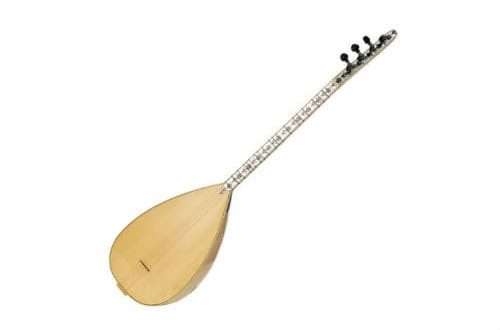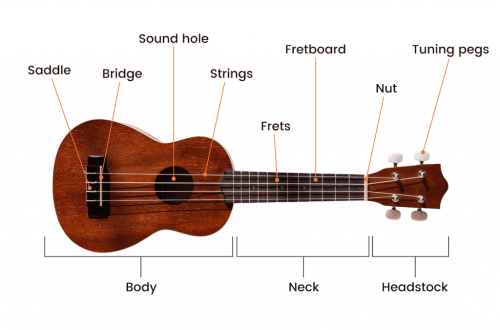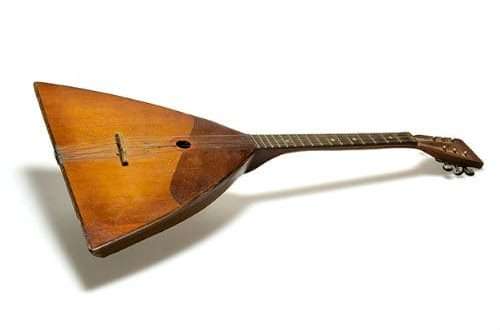
Oktobas: description of the instrument, composition, sound, history of creation, how to play
Contents
In the XNUMXth century, violin makers tried to create an instrument whose sound would be lower than that of the double bass. Numerous experiments have led to the appearance of a specimen of gigantic dimensions in the violin family. The octobass has not been widely used in musical culture, but some symphony orchestras use it to give a special flavor to old classical works.
What is octobas
A large chordophone in the violin string family looks like a double bass. The main difference between the tools is the size. At oktobass they are much larger – a height of about four meters. The width of the case in the most voluminous place reaches two meters. The neck is three-string, equipped with tuning pegs. The upper part of the case has levers. By pressing them, the musician pressed the strings to the bar.

What does octobass sound like?
The instrument produces a low sound at the limit of human hearing. If even lower sounds existed, then people would simply not hear them. Therefore, it was pointless to experiment with sizes further.
The system is determined by three notes: “do”, “sol”, “re”. The sound is muffled, the frequency “to” subcontroctave is 16 Hz. In musical practice, a very limited range was used, ending in “la” of the counteroctave. The inventors were disappointed with the sound of the octobass, it is less deep and rich compared to the “younger brother”.
The history of the creation of the instrument
At the same time, masters from different countries came up with the idea of increasing the body of the double bass. The smallest of the “giants” is represented by the English Museum. Its height is 2,6 meters. It was played by two people at once. One climbed onto a special stand and clamped the strings, the other led the bow. They called this instrument “Goliath”.
In the middle of the XNUMXth century, Paris saw an octobass one meter larger than English. Created by Jean Baptiste Vuillaume. The master made constructive adjustments to make playing the large double bass technically less difficult. He equipped the stringed musical instrument with a pull mechanism, which was driven by a series of levers at the top and pedals at the bottom.
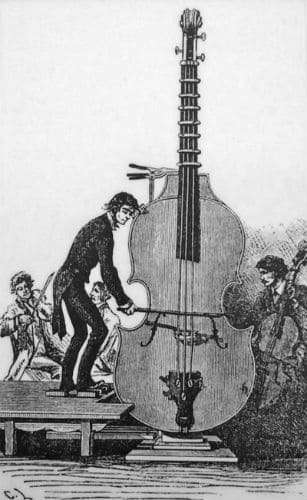
The American John Geyer went even further. His octobass was an impressive height – four and a half meters. It could not be placed in any room. It was technically difficult to play the giant instruments. They disappointed with their inferior sound. Compared to the double bass, it had little color, saturation, or depth of sound.
Over time, realizing the groundlessness of the idea, the masters stopped experimenting with the size of the case. They turned their attention back to double basses, improvements in which made it possible to obtain a low sound by adding a fifth string in the “do” tuning of the counteroctave. Additional lower sounds were also made possible by a special mechanism that “lengthens” the lowest string.
How to play the octobass
The technique of playing the “giant” is similar to the techniques of playing music on a violin or other bowed stringed instrument. Several centuries ago, musicians climbed to a special platform, next to which an octobass was installed. But even this position created difficulties when pressing the strings. Therefore, the possibility of fast tempos, jumps, passages was excluded. It is difficult to play even a simple scale, as its sound will be distorted by significant intervals between notes.
Among the famous composers, Richard Wagner paid great attention to the octobass part in his works. He strove to create an ideal density of sounds, specially writing for a giant double bass. Tchaikovsky, Berlioz, Brahms, Wagner used the opportunity to lower the sound to the limit. Modern composers have lost interest in the instrument, they use it very rarely. Of the most famous, one can note the work “Four Poems” by Adam Gilberti.
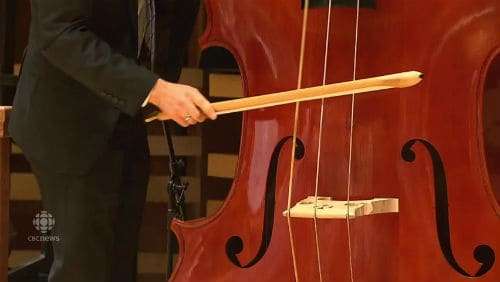
Similar Tools
The double bass and viola are not the only ones that the masters have experimented with. Among the strings there is another “giant”, which today can be heard in folk ensembles. This is a double bass balalaika. Its length is about 1,7 meters. Among other balalaikas, it has the lowest sound and performs a bass function.
The increase in size also affected wind instruments. This is how the contrabass saxophone appeared, up to two meters high, contrabass flute, the size of a human being. During the existence of the octobass, statements often appeared that the masters worked in vain, the fruit of their labor is uninteresting and does not expand the capabilities of the orchestra.
But research, experiments with low frequencies allowed the musicians to make other important discoveries. For culture, the work of masters is invaluable. Oktobass has long been the only instrument whose sound borders on the capabilities of human hearing.



